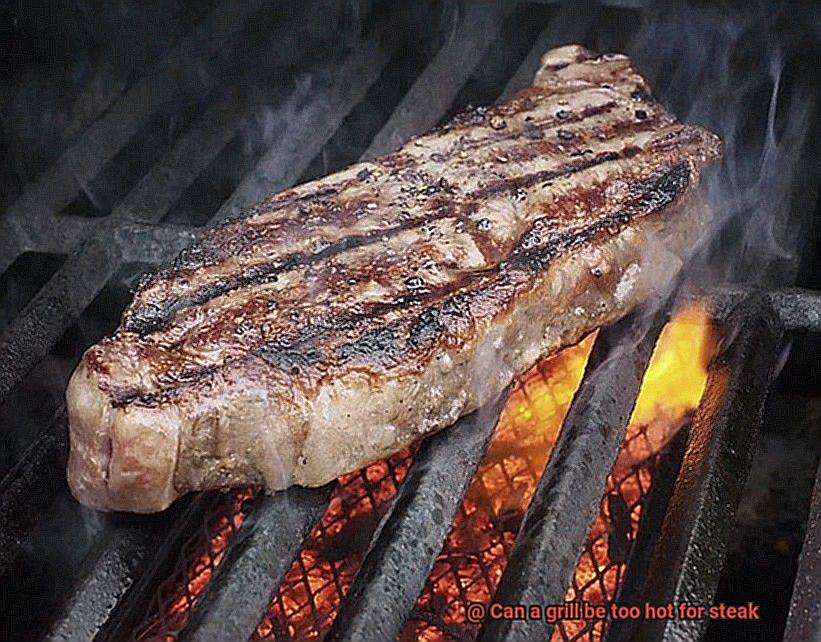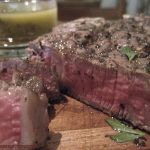You know that getting the perfect sear with those beautiful grill marks is key to making the most delicious meat. But have you ever wondered if your grill could be too hot for your steaks?
What if that ideal sear is actually cooking your meat and leaving it dry and tough?
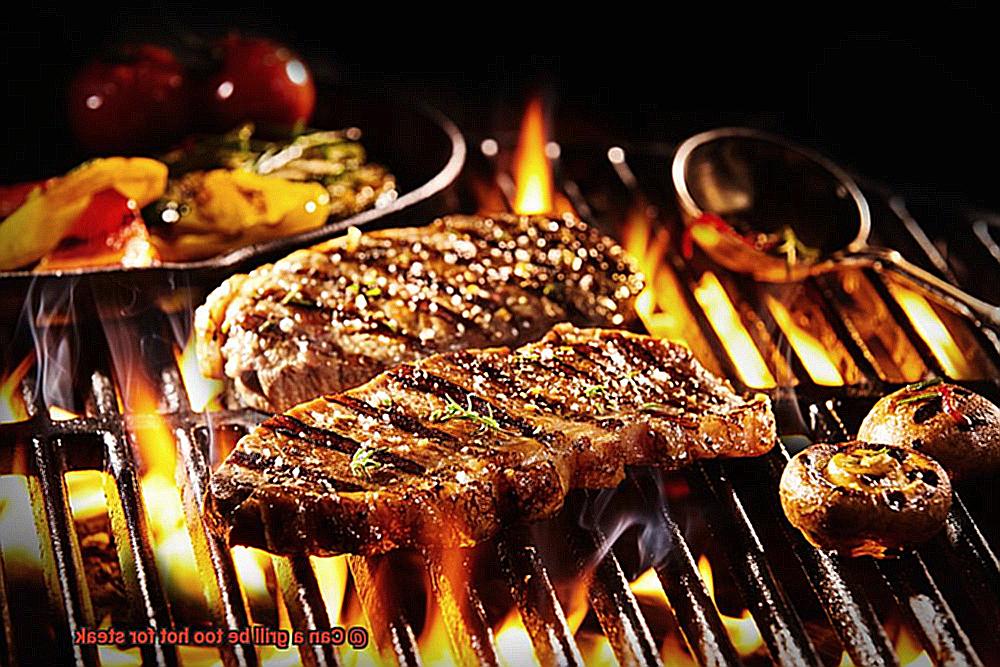
Yes, a grill can definitely be too hot for a steak. If the heat is too high, it can dry out the meat or cause uneven cooking.
However, finding the right balance between heat and searing is crucial to achieving that perfect steak. In this article, we’ll explore the correct temperature for grilling a steak and discuss why a grill can be too hot for your meat.
So, let’s dive in now.
Contents
What Makes a Grill Too Hot for Steak?
When it comes to cooking the perfect steak, there’s one crucial element you simply can’t overlook – the grill temperature.
A grill that’s too hot is a recipe for disaster, resulting in a tough, charred piece of meat that’s far from delectable.
So, what exactly makes a grill too hot for steak?
A variety of factors are at play here, and one of them is the type of fuel you’re using. If you’re grilling with charcoal, make sure the coals have burned down to the proper level before adding your steak.
If they’re still flaming, your steak will cook unevenly and may come out charred on the outside. Similarly, if you’re using a gas grill, pay close attention to the temperature gauge and adjust the heat accordingly.
Too high a temperature can cook the steak too quickly on the outside while leaving it undercooked on the inside. The distance between your steak and the heat source is another crucial factor to consider.
Placing your steak too close to the flames or heating element can result in an overcooked, dried-out piece of meat.
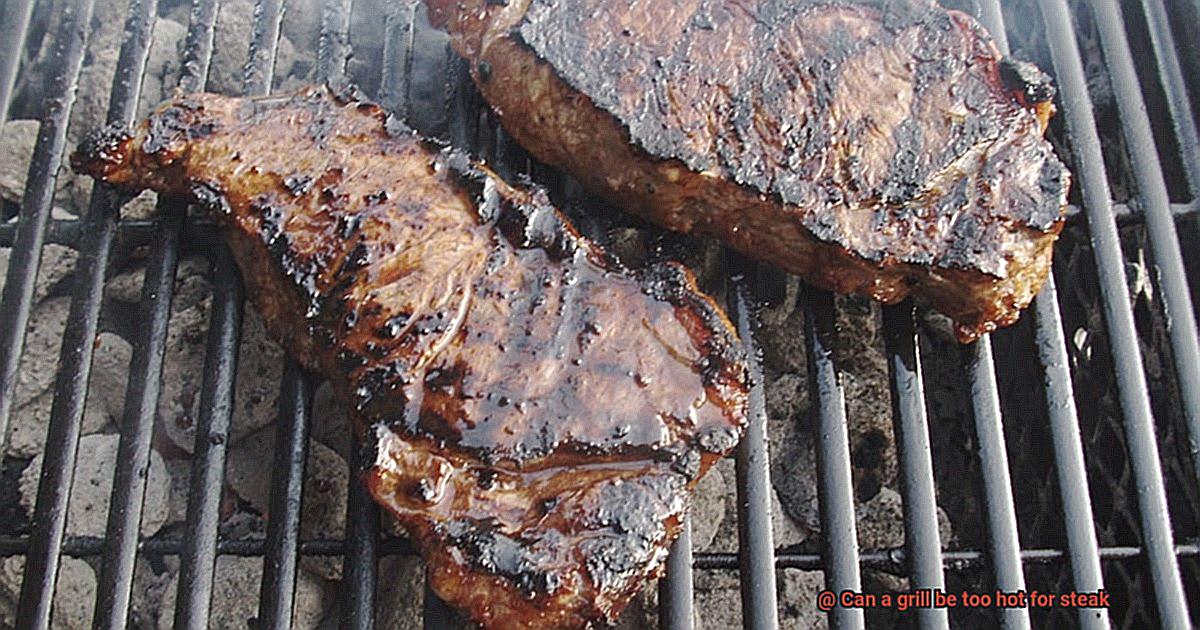
Maintaining a safe distance between your steak and the heat source is essential, and adjusting the temperature as needed is also important.
Grill hygiene is another overlooked aspect that affects your steak’s flavor and texture. A dirty grill can cause flare-ups and uneven heating, leading to overcooking or burning.
Regularly cleaning your grill grates and interior can help ensure that your steaks cook evenly and turn out perfectly every time.
The thickness of your steak and desired degree of doneness are also critical factors when it comes to grilling steak.
Thinner cuts such as flank or skirt steak need a hotter grill for a crisp sear without overcooking. In contrast, thicker cuts such as filet mignon or ribeye require starting on low heat and ending on high for even cooking.
To avoid overheating your grill, let your steak come to room temperature before cooking. Taking a cold piece of meat straight from the fridge and throwing it onto a hot grill can result in uneven cooking and burnt edges.
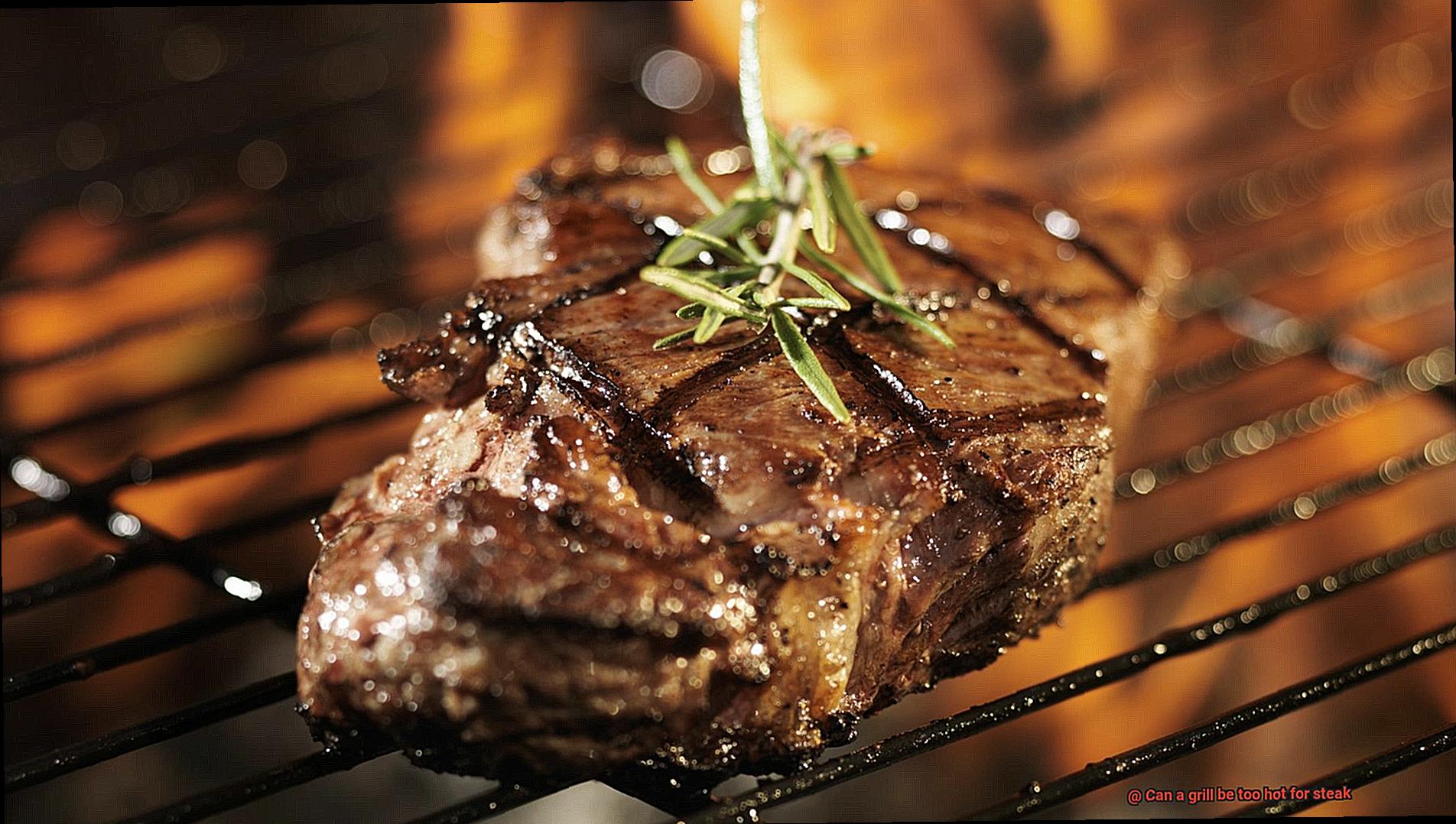
Allowing your steak to sit for about 30 minutes before grilling helps it cook more evenly and prevents overheating.
Lastly, use an instant-read thermometer to check your steak’s internal temperature.
Medium-rare is typically around 130-135°F, while medium should be around 140°F and medium-well around 150°F.
The Ideal Temperature for Grilling Steak
If you’re looking to grill the perfect steak, then temperature is the key ingredient to your success.
You don’t want to burn the outside while leaving the inside undercooked or overcook the meat until it becomes tough and dry. But what is the perfect temperature for grilling steak?
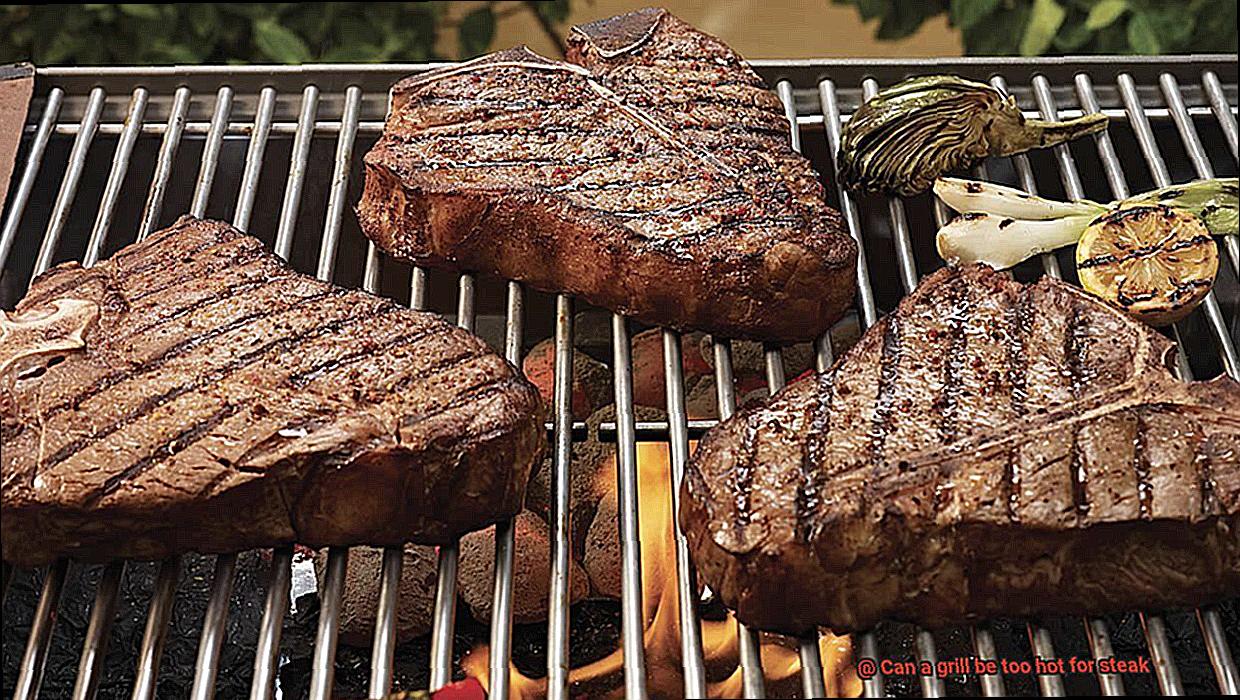
As a general rule of thumb, most steak cuts require a grill temperature of 450 to 500 degrees F. This temperature will give your steak a nice sear on the outside while still keeping it juicy and tender on the inside. However, thicker cuts of steak may require a lower temperature to ensure that the inside cooks properly without burning the outside.
It’s essential to use a meat thermometer to determine the internal temperature of your steak. This will help you know when it’s reached a safe cooking temperature and avoid any foodborne illnesses.
But that’s not all – after grilling your steak, you need to let it rest for a few minutes to allow the juices to redistribute throughout the dish. Doing so ensures that every bite is flavorful and tender.
How to Check if the Grill is Too Hot for Steak
Grilling the perfect steak can be a challenge, and getting the temperature just right is crucial. If your grill is too hot, your steak will be overcooked on the outside and undercooked on the inside.
To avoid this, it’s essential to know how to check if your grill is too hot for steak. Here are five foolproof ways to do just that.
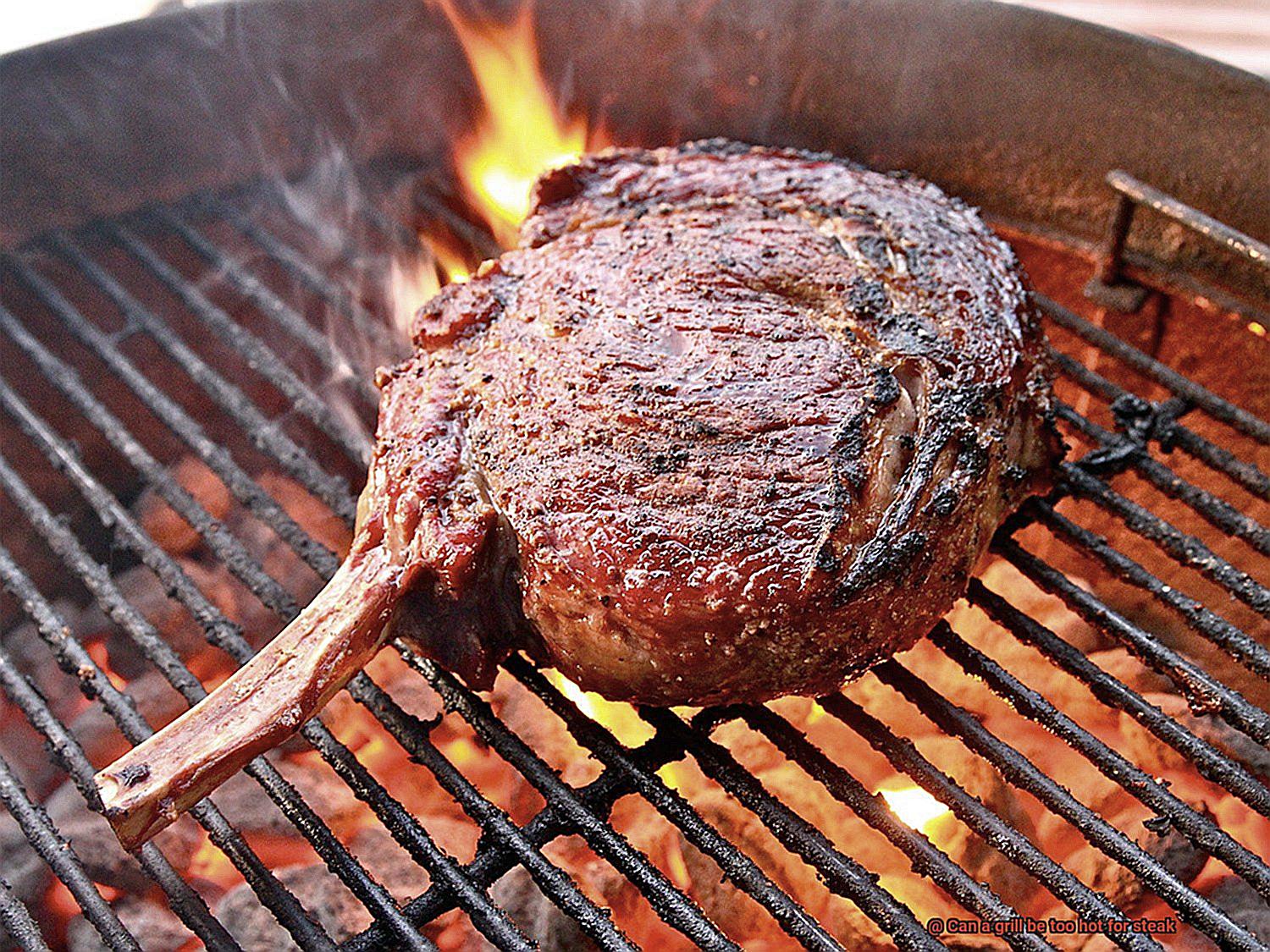
The Hand Test
The hand test is a popular method for checking the temperature of the grill. Hold your hand about six inches above the grill grates and count how many seconds you can keep it there before it becomes too uncomfortable.
If you can only keep your hand there for one to two seconds, it’s a sign that your grill is too hot for steak.
Infrared Thermometer
Using an infrared thermometer is a more accurate way to check the grill’s temperature. Aim it at the grates and read the temperature. This method will give you a precise temperature reading of the grill grates compared to the hand test.
Meat Thermometer
If you don’t have an infrared thermometer, you can use a regular meat thermometer to check the temperature of the grill grates. Place the thermometer on the grates and let it sit for a few minutes to get an accurate reading.
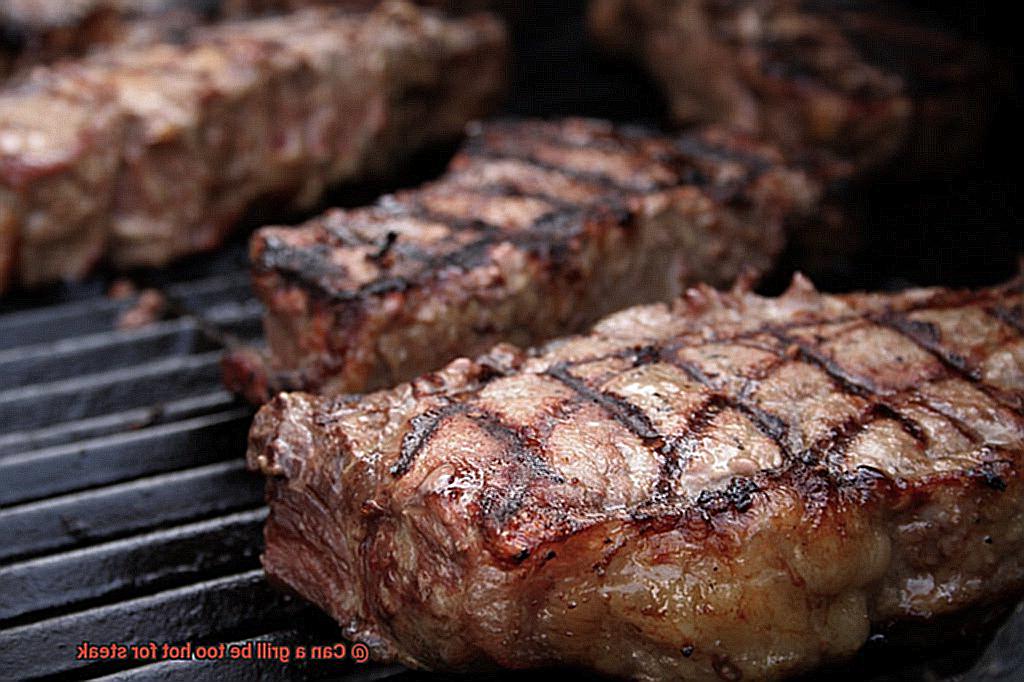
Instant-Read Thermometer
When it comes to checking the steak’s internal temperature, using an instant-read thermometer is key. It’s an easy way to ensure that your steak is cooked to perfection. For medium-rare steak, aim for 130-135 degrees Fahrenheit, while medium should be around 140°F and medium-well should be around 150°F.
The Sizzle Test
Lastly, you can use the “sizzle test” by placing a small piece of fat or meat on the grill and listening for the sizzle. If it sizzles loudly, then your grill is too hot for steak. If it sizzles gently, then your grill is at the right temperature.
It’s important to note that different cuts of steak require different cooking temperatures. For example, a thicker cut like a ribeye or filet mignon will require a lower temperature than a thinner cut like a flank or skirt steak.
So, grilling the perfect steak requires knowing how to check if the grill is too hot for steak. By using any of these five methods, you can ensure that your grill is at the right temperature for your steak to be cooked to perfection every time.
Letting the Steak Come to Room Temperature Before Cooking
Grilling a perfect steak is an art, and it all starts with letting your steak come to room temperature before cooking.
Just like how you wouldn’t start sprinting as soon as you step out of bed, your steak needs some time to warm up before hitting the grill. Why is this step so crucial?
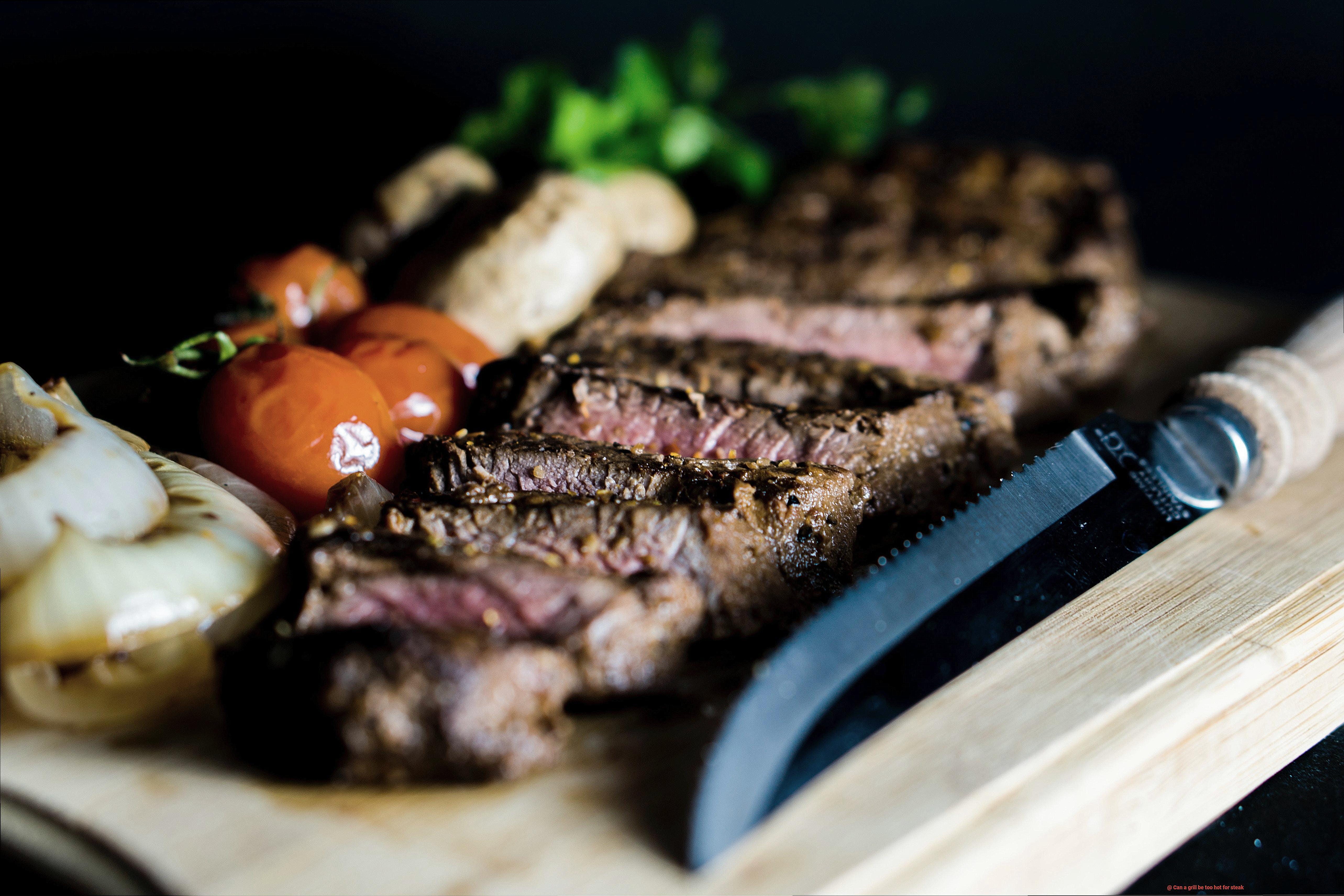
When you place a cold steak on a hot grill, the exterior cooks quickly, while the interior remains cold. This uneven cooking can result in a tough and chewy texture that nobody wants.
However, by allowing your steak to come to room temperature before cooking, you ensure even cooking and retain the juicy goodness. But that’s not all – letting your steak come to room temperature before cooking also helps reduce cooking time.
When you place a cold steak on the grill, it takes longer for the heat to penetrate the meat, resulting in longer cooking times. By taking the extra step to let your steak warm up, you can reduce cooking time and ensure that your steak is cooked perfectly.
So, whether you’re planning a backyard barbecue or simply want to impress your family with your grilling skills, remember to give your steak some time to warm up before hitting the heat.
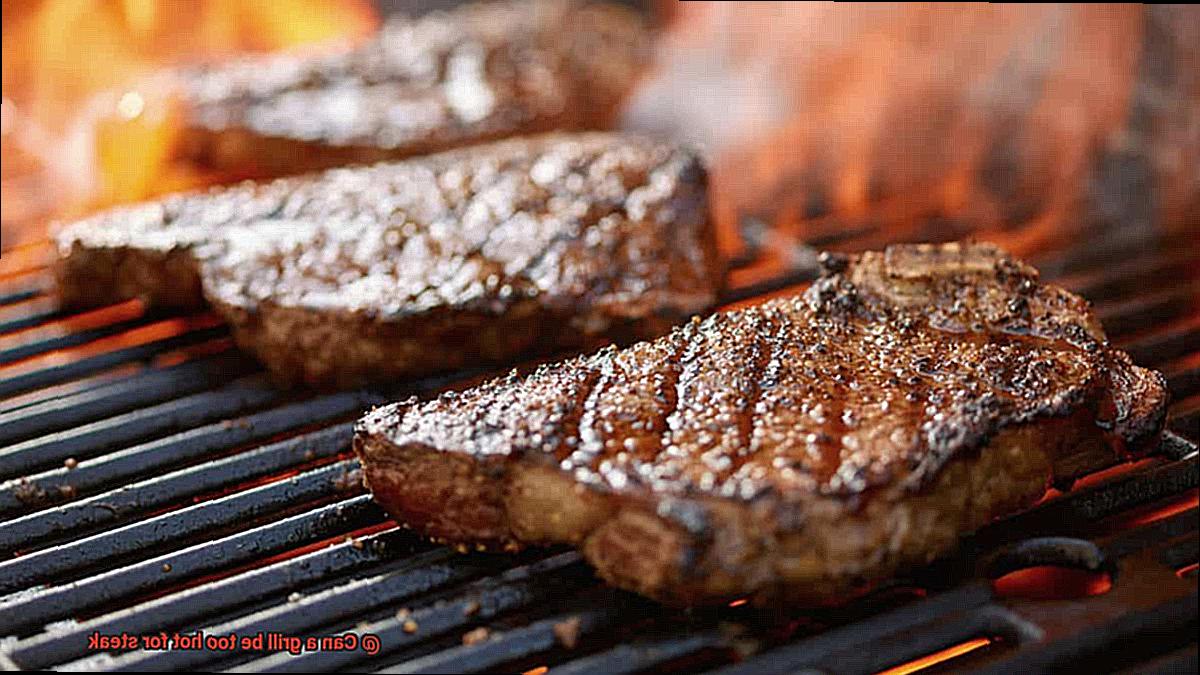
Tips and Tricks for Perfectly Cooked Steak
Achieving the perfect temperature for a juicy and tender steak can be a challenge. But fear not, we’ve compiled some tips and tricks to help you cook the perfect steak every time.
Preheat Your Grill
Preheating your grill is essential for getting that delectable charred crust without burning your steak. When the grill is too hot, the outside of the steak cooks too quickly, leaving the inside undercooked or raw.
To avoid this, preheat your grill for at least 10 minutes before adding your steak. This ensures that the steak grates are hot enough to sear the steak properly without burning it.
Direct and Indirect Heat
Using direct and indirect heat on your grill is a great technique for perfectly cooked steak. Direct heat is applied directly over the flames, while indirect heat is when the steak is placed on a cooler section of the grill away from the flames. By searing the steak on high heat for a short period of time and then finishing it on low heat, you’ll get a juicy and well-cooked steak every time.
Use a Meat Thermometer
A meat thermometer is an essential tool for cooking a perfectly cooked steak. It helps ensure that your steak is cooked to your desired level of doneness without overcooking or undercooking it.
For medium-rare, aim for 130-135°F, while medium should be around 140°F and medium-well should be around 150°F. By using a meat thermometer, you’ll be able to cook your steak to perfection every time.
Let Your Steak Rest
After cooking, let your steak rest for a few minutes before cutting into it.
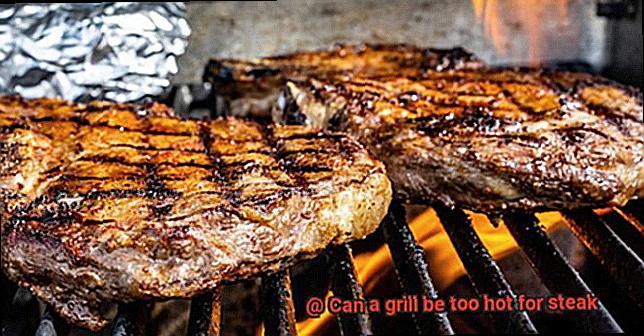
This allows the juices to redistribute throughout the meat, resulting in a tender and juicy steak. If you cut into your steak right after cooking, all the juices will leak out, leaving you with a dry and tough piece of meat.
So let your steak rest for a few minutes before serving, and you’ll be rewarded with a perfect steak every time.
Let Your Steak Come to Room Temperature
Allowing your steak to come to room temperature before cooking is another great tip for avoiding an overheated grill.
A cold piece of meat straight from the fridge can cause uneven cooking and possibly burnt edges. Letting your steak rest for about 30 minutes before grilling will help it cook more evenly and prevents from overheating.
This ensures that your steak cooks evenly and has a delectable crispy crust without being overcooked or undercooked.
2ua_v4BA3qM” >
Conclusion
In conclusion, achieving the perfect steak on the grill is all about finding the sweet spot between heat and searing.
A blazing hot grill may seem like the way to go, but it can actually ruin your steak by drying it out or leaving it unevenly cooked. Fear not, however, as there are some simple guidelines and tricks that will help you become a master of grilling succulent steaks every time.
One key factor to consider is the type of fuel you’re using, as well as the distance between your steak and the heat source. It’s also important to keep your grill clean and pay attention to the thickness of your meat and desired level of doneness.
Knowing how to tell if your grill is too hot for steak – whether through infrared thermometers or hand tests – can also be a game-changer in avoiding overcooking. Other crucial steps include preheating your grill, utilizing both direct and indirect heat methods, and letting your steak rest before cutting into it.
By following these tips and tricks, experimenting with different cuts of meat and temperatures, you’ll be able to impress everyone from friends to family with perfectly grilled steaks every time.

